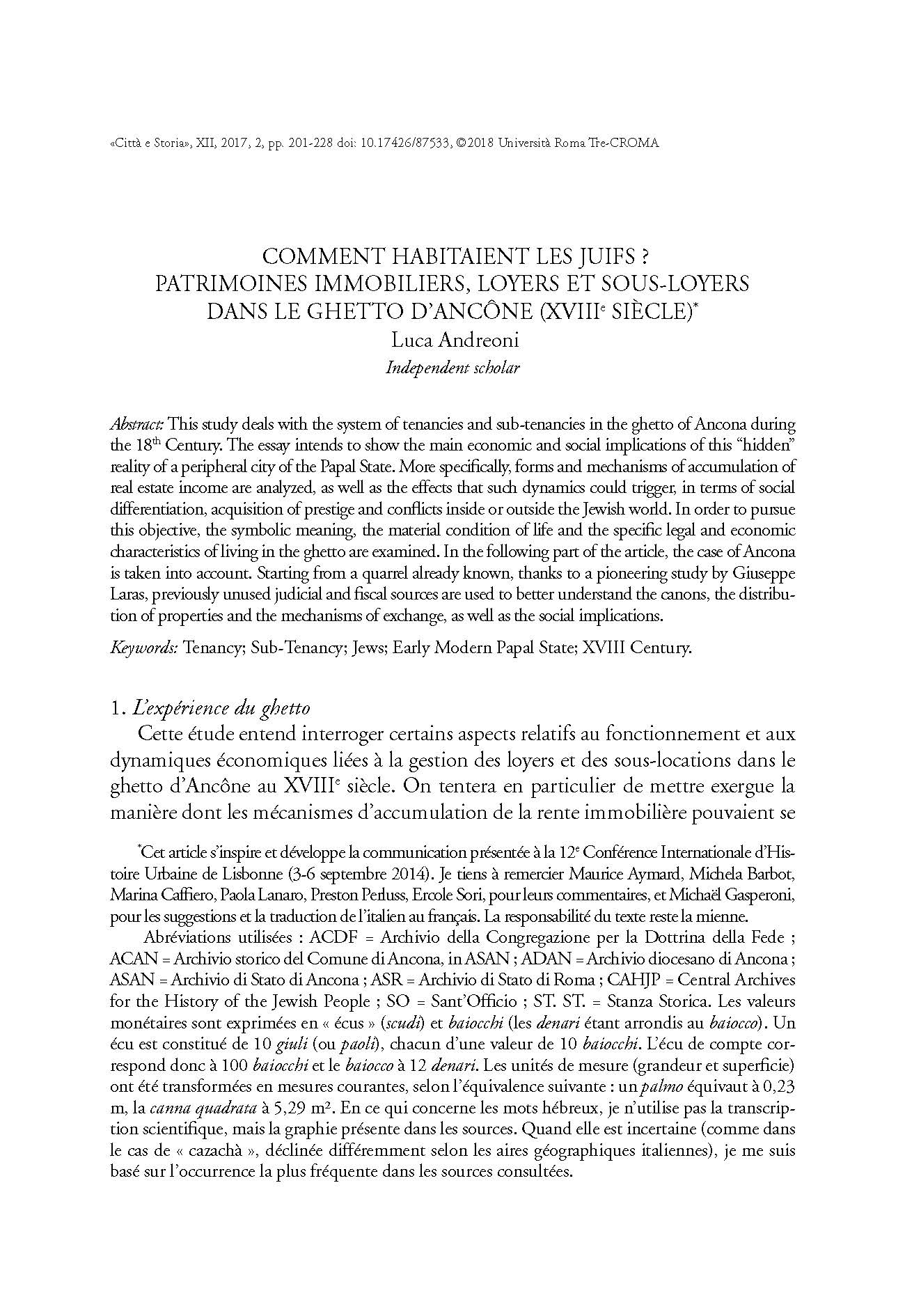Comment habitaient les Juifs ? Patrimoines immobiliers, loyers et sous-loyers dans le ghetto d’Ancône (XVIIIe siècle)
6,00 €
This study deals with the system of tenancies and sub-tenancies in the ghetto of Ancona during
the 18th Century. The essay intends to show the main economic and social implications of this “hidden”
reality of a peripheral city of the Papal State. More specifically, forms and mechanisms of accumulation of
real estate income are analyzed, as well as the effects that such dynamics could trigger, in terms of social
differentiation, acquisition of prestige and conflicts inside or outside the Jewish world. In order to pursue
this objective, the symbolic meaning, the material condition of life and the specific legal and economic
characteristics of living in the ghetto are examined. In the following part of the article, the case of Ancona
is taken into account. Starting from a quarrel already known, thanks to a pioneering study by Giuseppe
Laras, previously unused judicial and fiscal sources are used to better understand the canons, the distribution
of properties and the mechanisms of exchange, as well as the social implications.
This study deals with the system of tenancies and sub-tenancies in the ghetto of Ancona during
the 18th Century. The essay intends to show the main economic and social implications of this “hidden”
reality of a peripheral city of the Papal State. More specifically, forms and mechanisms of accumulation of
real estate income are analyzed, as well as the effects that such dynamics could trigger, in terms of social
differentiation, acquisition of prestige and conflicts inside or outside the Jewish world. In order to pursue
this objective, the symbolic meaning, the material condition of life and the specific legal and economic
characteristics of living in the ghetto are examined. In the following part of the article, the case of Ancona
is taken into account. Starting from a quarrel already known, thanks to a pioneering study by Giuseppe
Laras, previously unused judicial and fiscal sources are used to better understand the canons, the distribution
of properties and the mechanisms of exchange, as well as the social implications.

